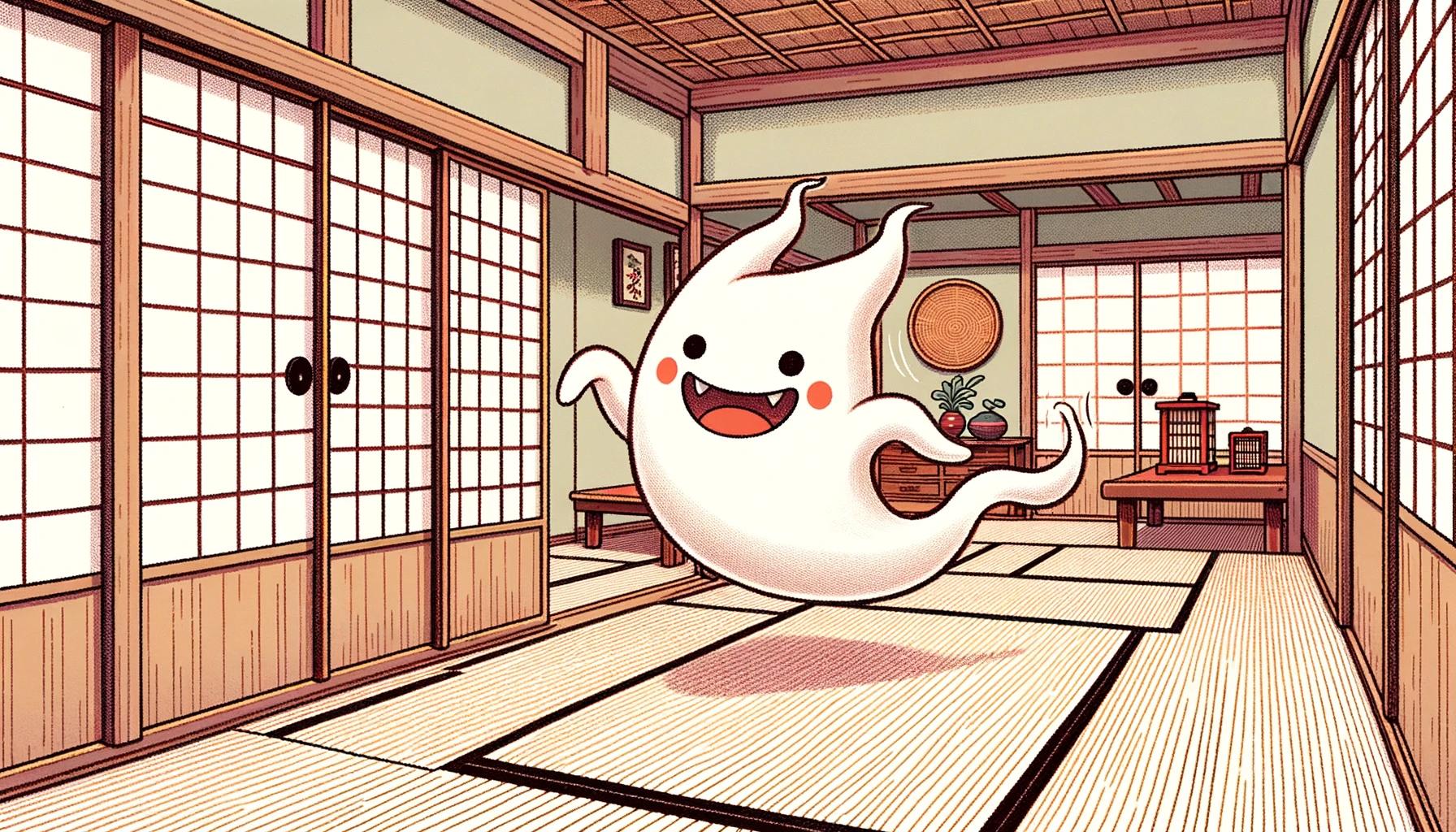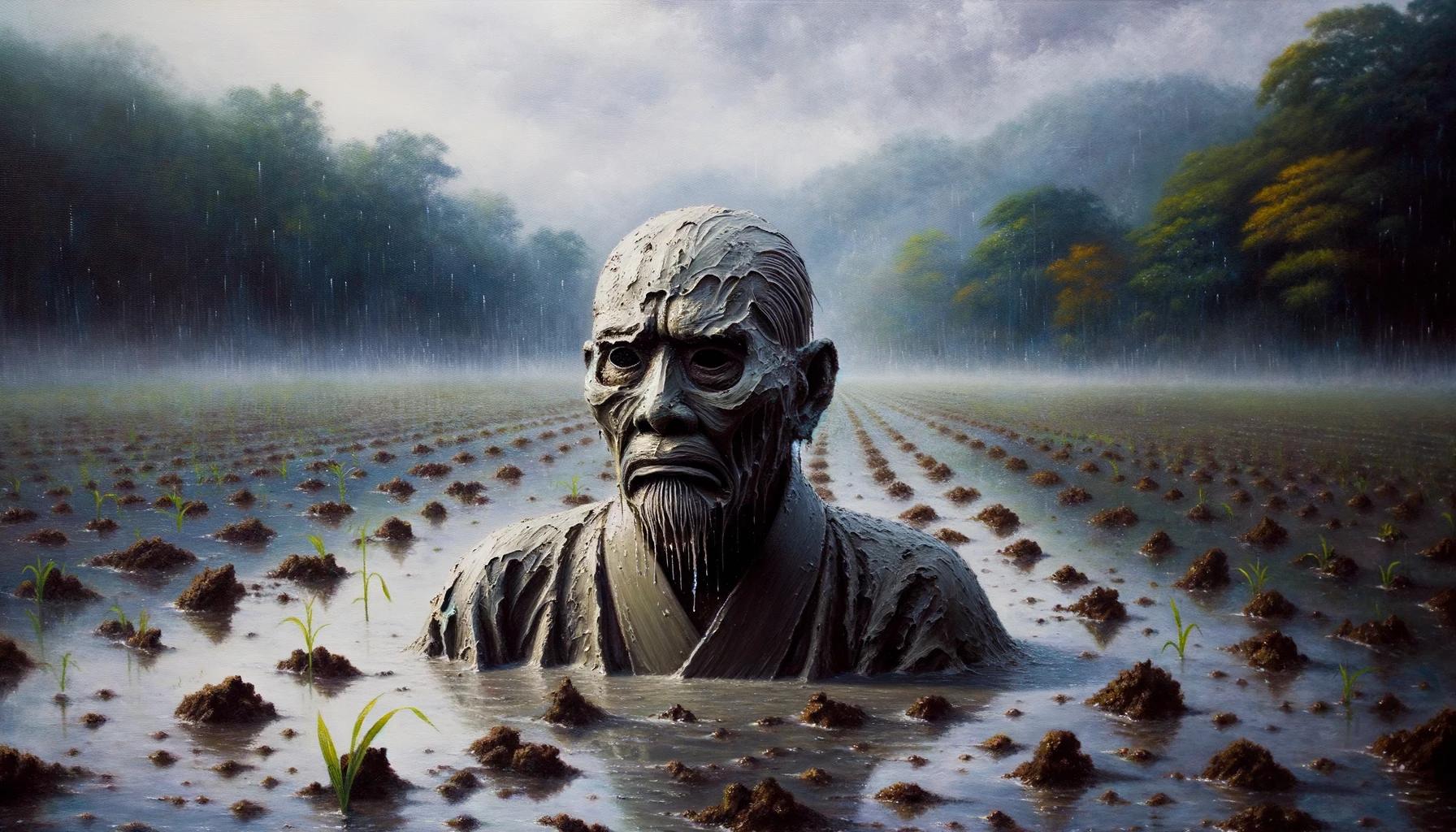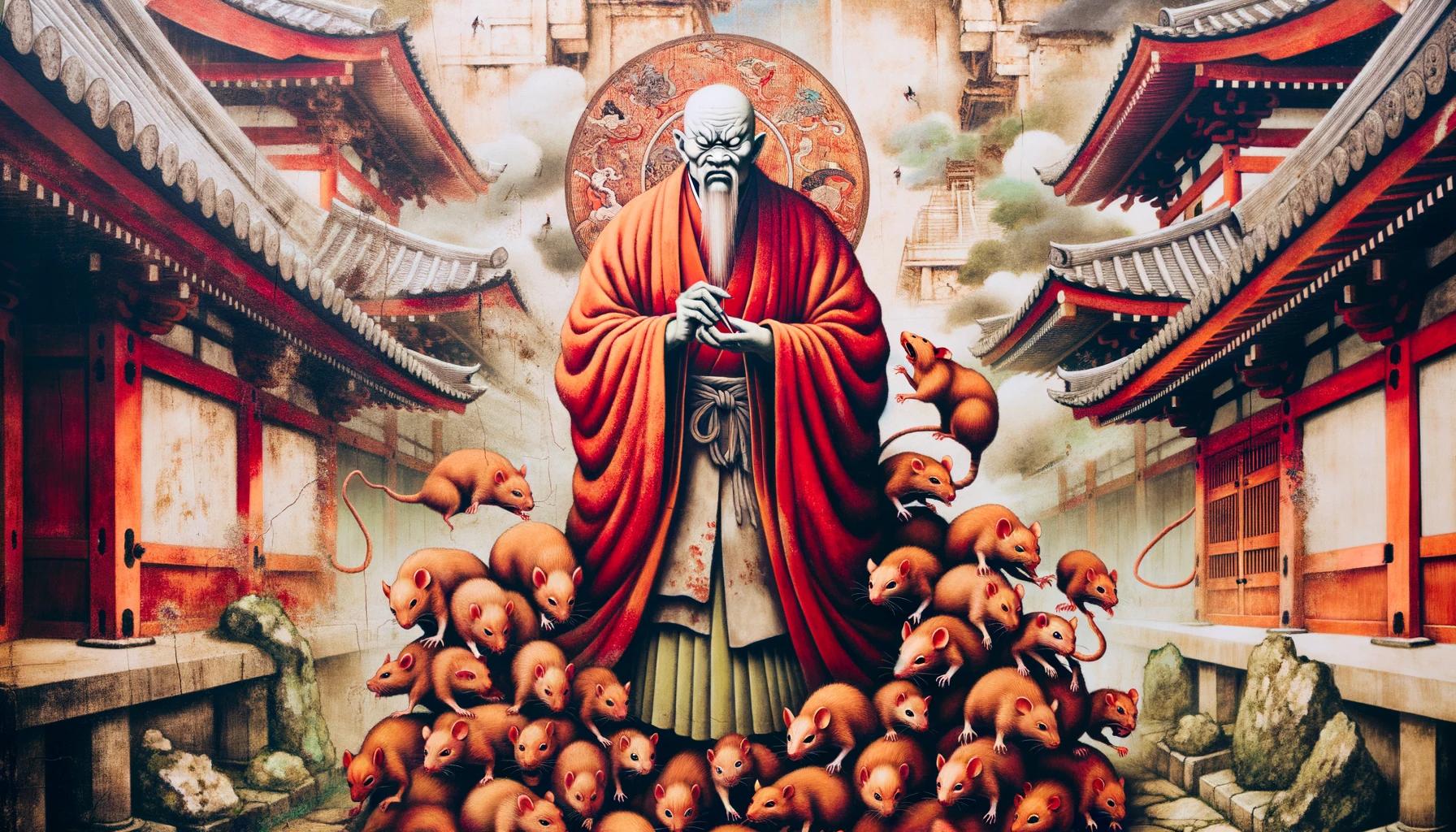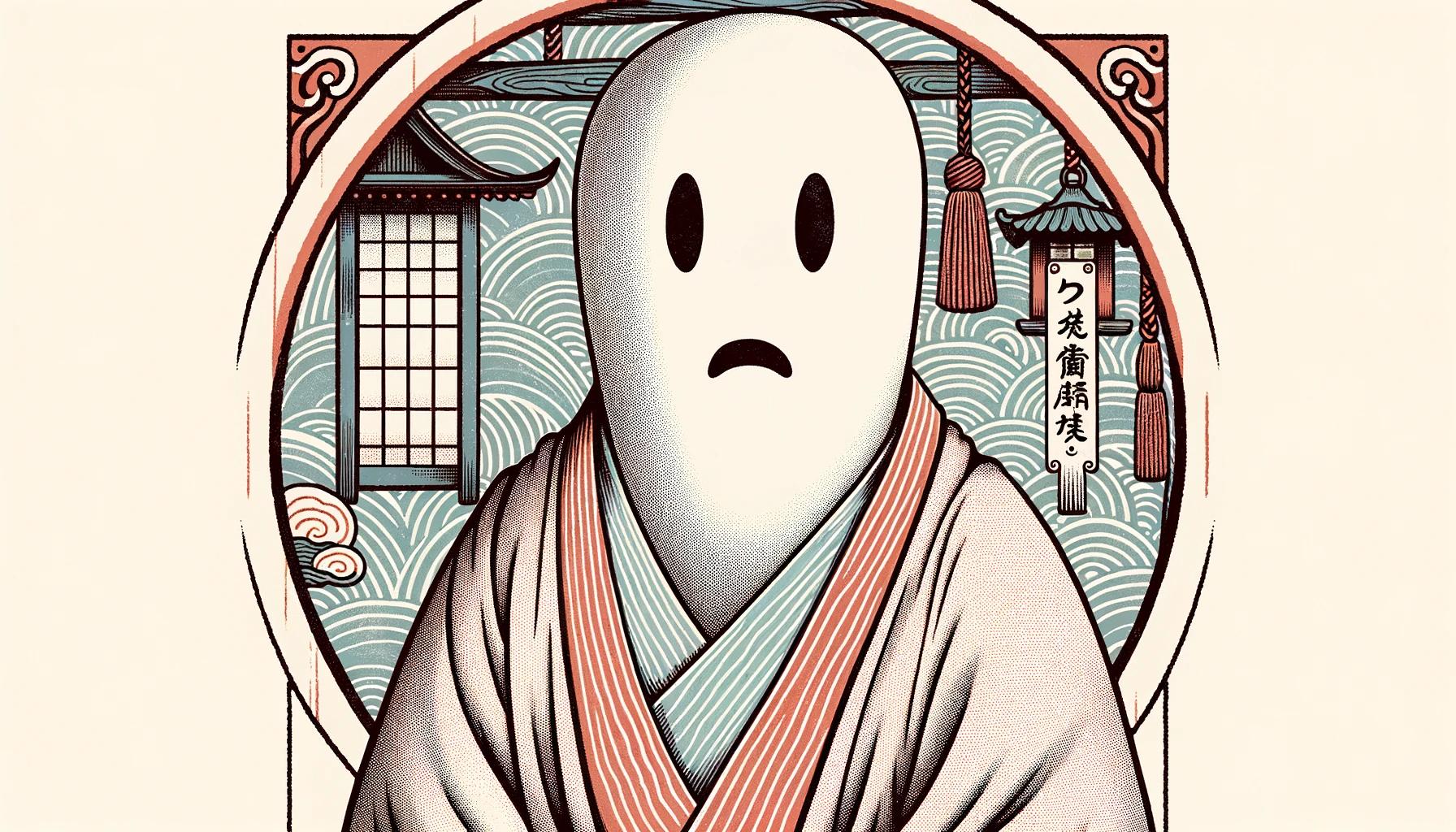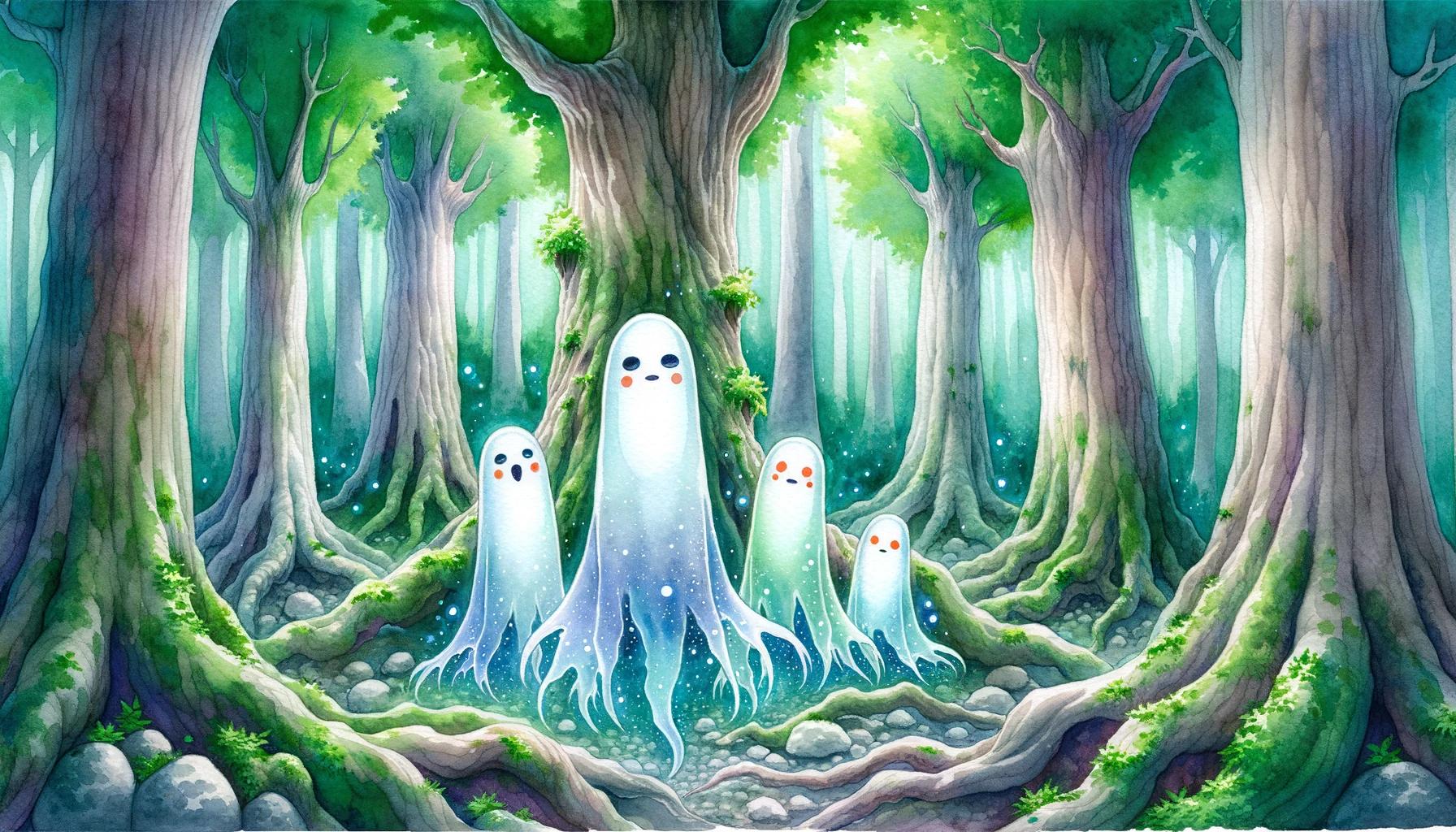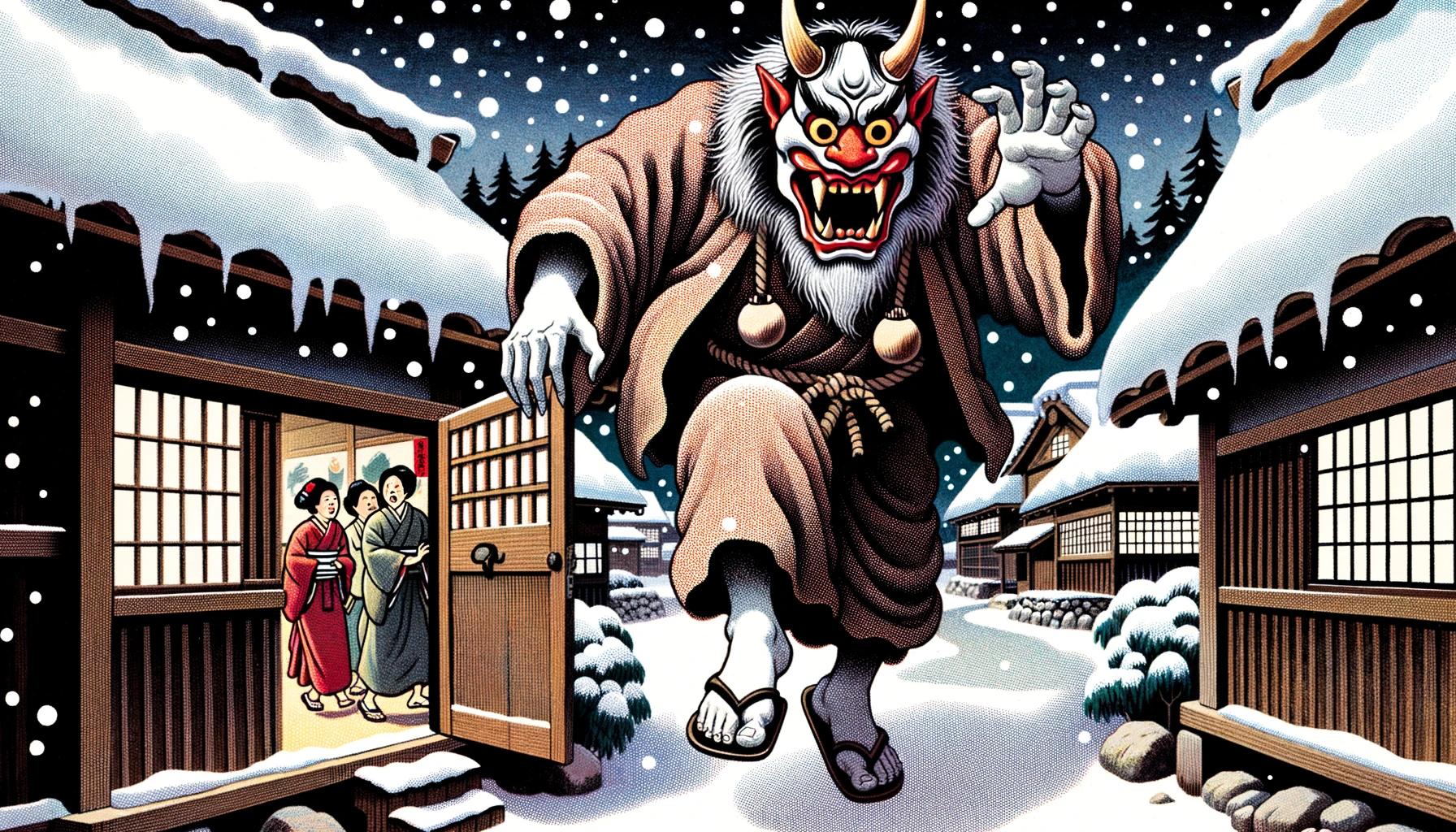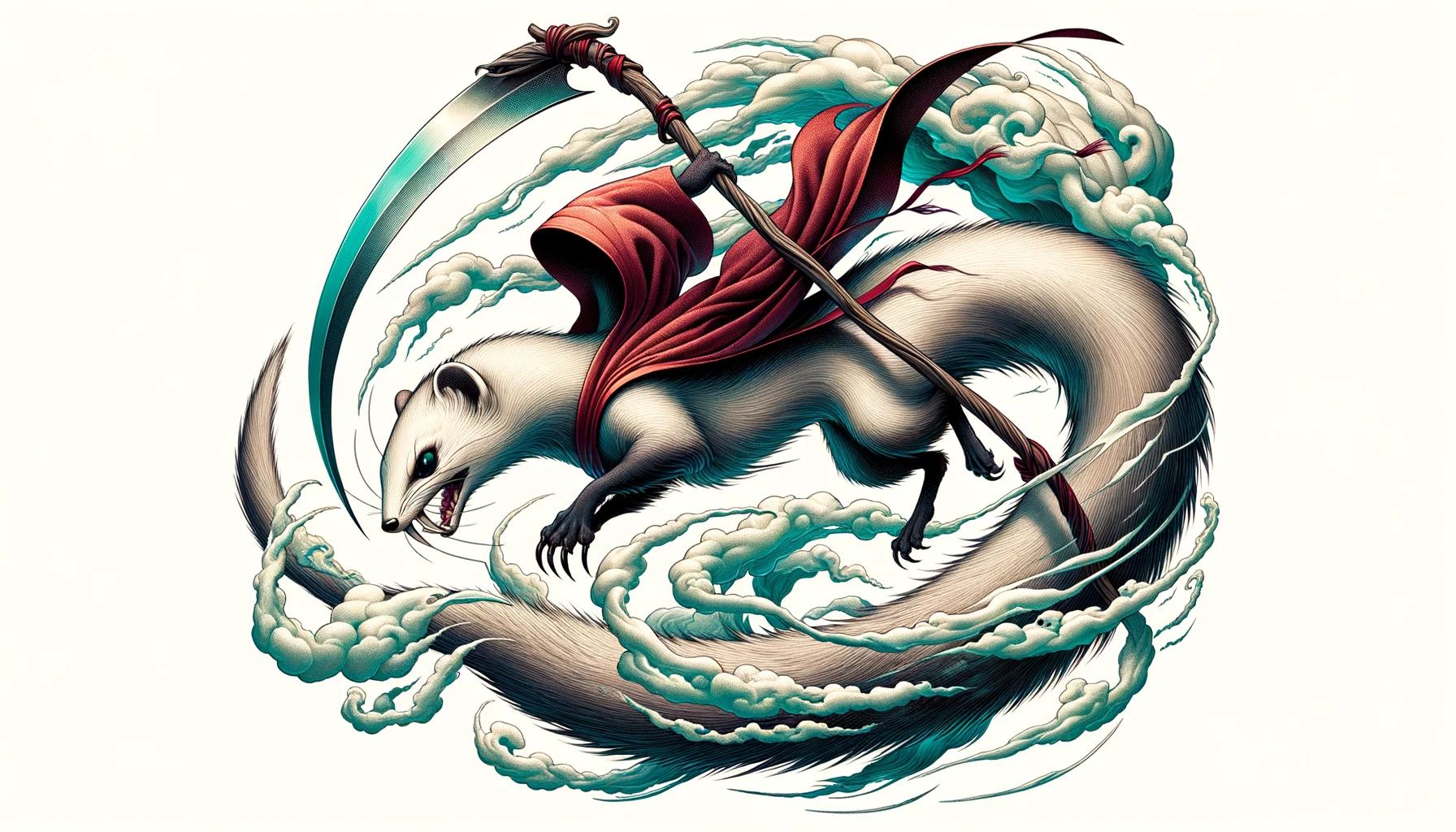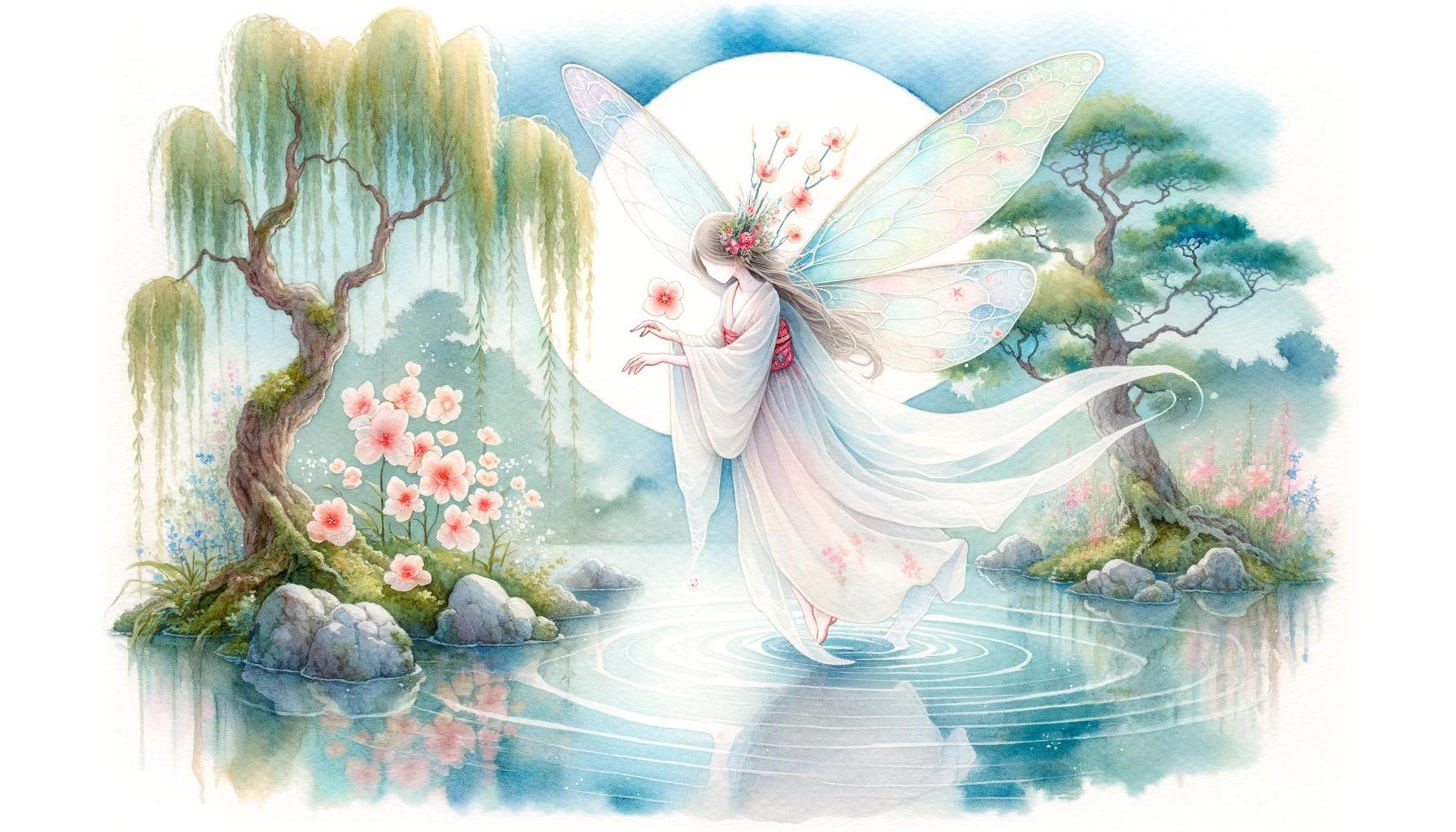Zashiki Warashi Yokai: Mysterious Child Spirits of Japan
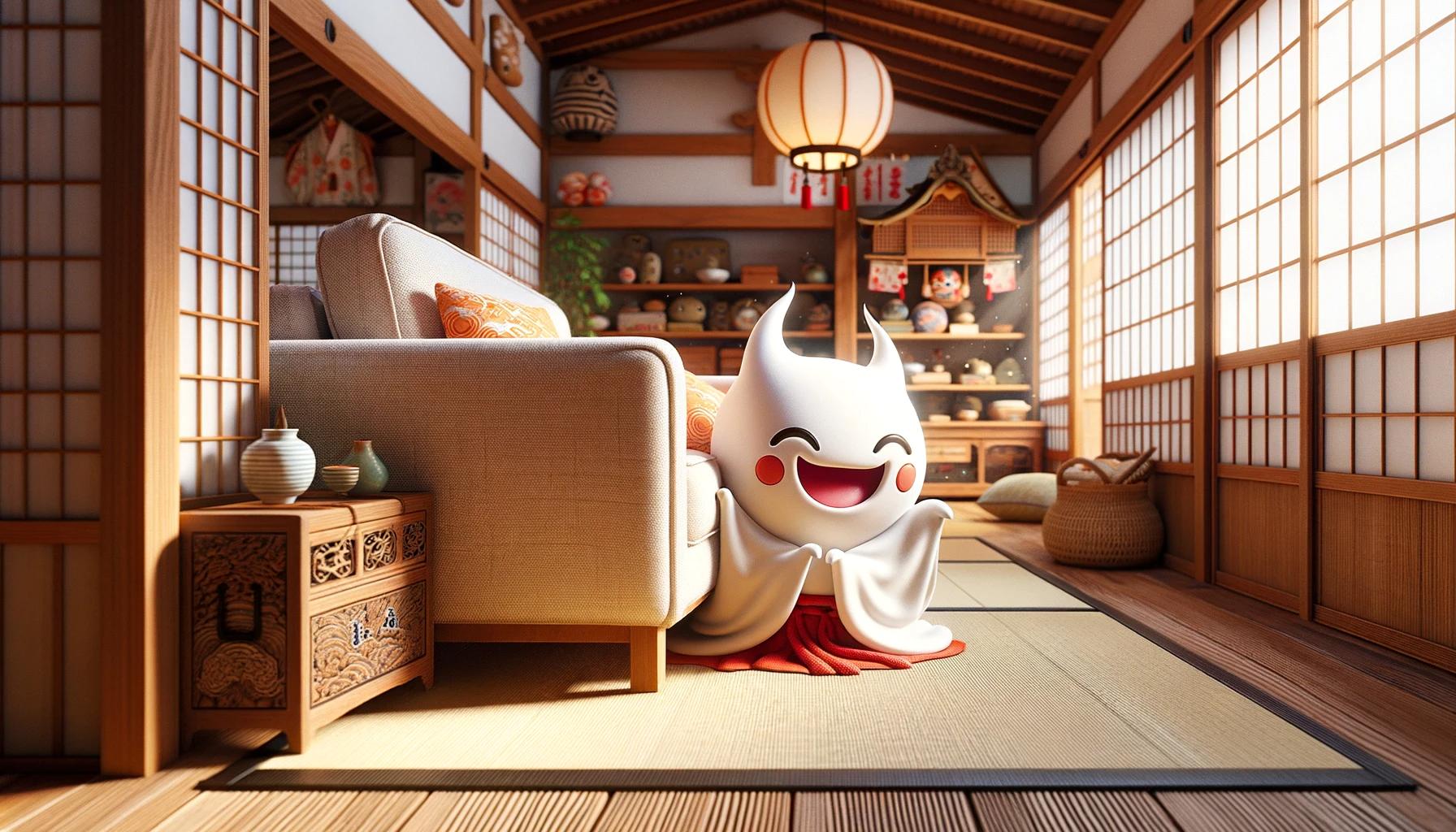
Zashiki Warashi yokai are mischievous spirit yokai known in Japan for their love of pranks. They are believed to dwell in well-maintained houses and typically appear as ghostly children with rosy cheeks.
Some may also take the form of wild and hairy figures. These spirits are elusive and can only be seen by children and homeowners. They enjoy playing tricks, leaving behind footprints in ashes or soap dust, as well as making ghostly noises resembling children’s games and sacred Shinto music.
Known as protectors and bringers of good luck, having a Zashiki Warashi in the house is considered positive and believed to bring prosperity.
The Origins and Legends of Zashiki Warashi
Zashiki Warashi, the mischievous spirits known for their love of pranks, have a rich history rooted in Yokai folklore of Japanese culture. These supernatural beings have captivated the imaginations of people for centuries, appearing as ghostly children with rosy cheeks and whimsical personalities.
Their origins can be traced back to ancient legends and tales passed down through generations.
Yokai Folklore in Japanese Culture
Yokai, which translates to “bewitching apparition” or “ghostly entity,” are a diverse category of supernatural creatures deeply ingrained in Japanese culture and folklore. These entities encompass various beings, from mischievous tricksters to vengeful spirits, each with their own unique characteristics and stories.
Zashiki Warashi emerged as a prominent figure within this fascinating pantheon of Yokai.
Variations and Regional Names of Zashiki Warashi
- Kura Bokko or Child of the Warehouse
- Makura Gaeshi or Pillow Flipper
While Zashiki Warashi is the commonly recognized name, these mischievous spirits are known by different regional names in various parts of Japan.
One such name is Kura Bokko, meaning “Child of the Warehouse,” reflecting their association with the storage areas of houses. Another name is Makura Gaeshi, which translates to “Pillow Flipper,” alluding to their propensity to turn pillows upside down as a playful prank.
These regional variations highlight the diverse folklore and cultural nuances surrounding Zashiki Warashi.
As different regions have their own unique folklore and interpretations, variations in appearance and behavior can also be found.
Although the core attributes remain consistent, such as their ghostly childlike form and mischievous nature, minor differences in physical appearance and specific pranks add depth and intrigue to the lore surrounding Zashiki Warashi.
Characteristics and Appearances of Zashiki Warashi
Zashiki Warashi yokai possess distinct characteristics and appearances that contribute to their mystique. These ghostly spirits, often residing in well-maintained houses, exhibit various traits that set them apart. Let’s explore these intriguing aspects in detail:
Ghostly Children with Rosy Cheeks
One remarkable aspect of Zashiki Warashi is their appearance as ghostly children with rosy cheeks.
Their youthful visage, often resembling children around the age of five or six, adds to their innocence and haunting allure. These spectral figures, with their flushed faces, bring an eerie yet endearing presence to the places they inhabit.
Wild and Furry Figures
In some instances, Zashiki Warashi may also take on the form of wild and furry figures. This variation showcases their shape-shifting abilities and highlights their connection to the natural world. Amalgamating elements of playfulness and unpredictability, these spirits can exhibit a more untamed and mischievous side.
Limited Visibility and Perception
Zashiki Warashi are elusive entities, often visible only to children and homeowners. Their ability to remain hidden from the general public adds to the air of mystery surrounding them. Ordinary individuals may find it challenging to directly spot these spirits, reinforcing the belief that they selectively reveal themselves to those with a certain connection to the house or the younger ones within it.
The fascinating characteristics and appearances of Zashiki Warashi deepen the intrigue and fascination surrounding these ghostly yokai. By manifesting as ghostly children with rosy cheeks or wild and furry beings and maintaining limited visibility to most individuals, they both captivate and bewilder those fortunate enough to perceive their presence.
Tricks and Pranks of Zashiki Warashi
Zashiki Warashi yokai are mischievous spirits known for their love of playing tricks and pranks. These playful entities bring a touch of whimsy to the homes they inhabit, leaving behind clues of their mischievous presence.
Let’s delve deeper into the tricks and pranks associated with Zashiki Warashi.
Children’s Footprints in Ashes and Soap Dust
One of the telltale signs that a house is inhabited by a Zashiki Warashi is the discovery of children’s footprints in ashes or soap dust. These ghostly children leave behind their invisible traces, often found near the hearth or in areas where they frequent.
The footprints serve as a playful reminder of their presence, inviting curiosity and wonder.
Ghostly Sounds and Playful Noises
Zashiki Warashi also make their presence known through ghostly sounds and playful noises. They mimic the sounds of children playing, including the spinning of spinning tops, the crinkling of paper, and the voices of unseen youngsters.
Some homeowners even report hearing sacred Shinto music, adding an ethereal touch to the household ambiance. These playful noises bring a sense of liveliness and joy to the space.
Tricking and Entertaining Children
Zashiki Warashi have a special bond with children, often engaging in playful interactions and games.
They teach children songs, games, and riddles, fostering a sense of friendship and companionship. These mischievous spirits become beloved playmates, creating a sense of joy and enchantment in the lives of the children fortunate enough to encounter them.
While their pranks may occasionally startle or befuddle, they never intend harm.
In conclusion, Zashiki Warashi delight in playing tricks and pranks, leaving behind footprints as evidence of their invisible presence.
They generate ghostly sounds and mimic the playfulness of children, adding an otherworldly charm to the homes they inhabit. These mischievous spirits forge friendships with children, engaging them in songs, games, and riddles.
The playful nature of Zashiki Warashi brings a touch of magic and wonder to the lives they touch.
Zashiki Warashi as Protectors and Bringers of Good Luck
Zashiki Warashi are not only mischievous spirits but also believed to hold a special role as protectors and bringers of good luck in Japanese folklore. These childlike yokai are considered guardians of houses and fortunes, with their presence believed to bring prosperity and wealth.
Guardians of Houses and Fortunes
Zashiki Warashi are regarded as protectors of the houses they inhabit. It is believed that having a Zashiki Warashi in one’s home safeguards the dwelling from misfortune and ensures the family’s prosperity.
Families that are fortunate enough to host these spirits often experience good luck and abundance in their lives.
These yokai are thought to be deeply connected to the well-being and success of the household.
Consequently, they are treated with reverence and care, as their departure could be seen as a sign of impending decline or misfortune.
Japanese families have established customs to maintain a friendly relationship with Zashiki Warashi.
These customs include leaving food offerings in the zashiki, where they reside, and placing coins in the foundations when constructing a new house. Additionally, families take great care of their formal reception rooms, known as zashiki, to ensure they do not drive away any protective spirits that may dwell there.
Stories and Beliefs Surrounding Prosperity and Misfortune
Various stories and beliefs support the notion that having a Zashiki Warashi brings prosperity, while their departure can result in misfortune. Legends tell of families that witnessed the departure of a Zashiki Warashi only to face tragic events soon after, such as food poisoning leading to death or a sudden collapse of previously abundant wealth.
These tales emphasize the significance of keeping Zashiki Warashi in the home and treating them with respect. Families often form deep bonds with these spirits, considering them as integral parts of their household.
Some couples, especially older ones or those struggling with infertility, perceive Zashiki Warashi as their own children and cherish their friendship.
Furthermore, it is believed that Zashiki Warashi possess a level of foresight, occasionally warning the family of upcoming disasters or tragedies.
Their presence is cherished not only for the joy and playfulness they bring but also for their role in protecting and guiding the household.
Zashiki Warashi’s Bond with Children and Families
Zashiki Warashi yokai not only bring luck and protection to homes but also form unique bonds with children and families who encounter them.
Their mischievous nature extends to teaching children songs, games, and riddles, providing entertainment and fostering a sense of wonder. Through their interactions, Zashiki Warashi become cherished friends and playmates to the younger members of the household.
Teaching Songs, Games, and Riddles
Engaging with children’s playful spirits, Zashiki Warashi impart their wisdom through catchy songs, engaging games, and intriguing riddles. These interactions serve as opportunities for children to learn and develop their cognitive abilities while creating lasting memories and experiences.
The melodies and challenges shared by the Zashiki Warashi create a bond filled with amusement and shared joy.
Combating Infertility and Becoming Adopted ‘Family’ Members
Not limited to entertaining children, Zashiki Warashi also hold a special place in the lives of couples struggling with infertility. In beliefs and stories, these spirits have been known to bless households with children, adopting the role of adopted ‘family’ members.
Through their presence, they bring hope and comfort to those yearning for parenthood, offering solace during a challenging journey.
Customs to Attract and Maintain Yokai Friendship
To cultivate and maintain a friendship with Zashiki Warashi, Japanese families follow customs aimed at attracting and pleasing these yokai. Leaving food in the zashiki or placing coins in the foundation of a new house are believed to draw their presence and favor.
Additionally, families take great care to preserve their formal reception rooms, ensuring they don’t unintentionally drive away any protective spirits that may reside within.
- Leaving food offerings in the zashiki.
- Placing coins in the foundation of a new house.
- Maintaining well-kept formal reception rooms.
By observing these customs, families show their respect and appreciation for the Zashiki Warashi, fostering an enduring bond and inviting their continued benevolence.
Other Yokai Related to Zashiki Warashi
In addition to Zashiki Warashi, Japanese folklore is rich with various other Yokai creatures that captivate the imagination. These yokai share similar characteristics and connections within Japanese folklore, showcasing the diverse and intriguing mythical creatures that inhabit the country’s legends and stories.
Tengu, Kitsune, and Kappa
Tengu, Kitsune, and Kappa are prominent yokai that often appear alongside Zashiki Warashi in folklore. Tengu are mythical creatures known for their bird-like appearance and martial arts prowess.
Kitsune, on the other hand, are shape-shifting fox yokai associated with cunning and trickery. Kappa are water-dwelling creatures resembling a mix of turtles and monkeys, often mischievous but not necessarily malevolent.
Yuki Onna, Oni, and Yōkai Companions
Apart from these yokai, Yuki Onna, Oni, and other yokai companions frequently make appearances in conjunction with Zashiki Warashi. Yuki Onna, the Snow Woman, is a spirit associated with snowy landscapes and ice-cold beauty.
Oni, on the other hand, are considered ogre-like creatures with immense strength and often depicted as malicious beings in folklore.
Similarities and Connections in Japanese Folklore
These yokai share similarities and connections within Japanese folklore, often intertwining their stories and appearing in various legends and tales. Their presence adds depth and complexity to the mythical fabric of Japan, showcasing the vast array of imaginative creatures that have captured the fascination of people throughout history.
- Tengu are renowned beings in martial arts folklore, often depicted as master swordsmen.
- Kitsune possess shape-shifting abilities and are associated with both mischief and wisdom.
- Kappa are known for their love of cucumbers and their inclination for trickery near water bodies.
- Yuki Onna is often depicted as a beautiful, yet eerie, spectral figure associated with snowstorms.
- Oni are typically depicted as fierce, horned creatures, representing aspects of evil and chaos.
These creatures, along with Zashiki Warashi, contribute to the rich tapestry of Japanese folklore and continue to captivate imaginations both in traditional stories and modern popular culture.
Zashiki Warashi in Popular Media and Culture
Zashiki Warashi, the mischievous spirits of Japan, have made their way into various forms of popular media and have become fascinating figures in modern culture. From anime and manga to video games, their presence is felt across different platforms that cater to diverse audiences.
Zashiki Warashi in Anime, Manga, and Video Games
1. Anime: Zashiki Warashi have appeared as intriguing characters in numerous anime series, capturing the imaginations of viewers. They often serve as central figures or play supporting roles, adding a touch of mystery and supernatural elements to the storylines.
Some notable anime featuring Zashiki Warashi include [Insert Anime Titles].
2. Manga: The world of manga has also embraced the enchanting nature of Zashiki Warashi, presenting them as captivating characters in their own right.
Manga artists have explored their personalities, abilities, and interactions with humans, creating unique narratives that delve into their mischievous behavior and relationships. Notable manga titles featuring Zashiki Warashi include [Insert Manga Titles].
3. Video Games: Zashiki Warashi have found their way into the immersive world of video games, allowing players to interact with these supernatural beings firsthand. They appear as companions, allies, or sometimes even as foes, adding an element of intrigue and magic to the gaming experience.
Some popular video games featuring Zashiki Warashi include [Insert Video Game Titles].
Folklore-inspired Zashiki Warashi Stories
Outside of mainstream media, Zashiki Warashi continue to captivate audiences through folklore-inspired stories that explore their rich cultural heritage. These tales often highlight the spirits’ interactions with humans, the influence they have on household fortunes, and the consequences that follow their departure.
These stories serve not only as entertainment but also as a means to preserve and celebrate Japan’s folklore traditions.
Prosperity and Misfortune
In these stories, Zashiki Warashi are depicted as bringers of good luck and prosperity.
The tales emphasize the significance of their presence in a household and the potential consequences that may arise if they are expelled or mistreated.
Warning of Disasters
Some folklore tales depict Zashiki Warashi as harbingers of impending disasters or tragedy. Their disappearance or sudden change in behavior serves as a warning sign to the inhabitants, urging them to take precautions or make amends to avert unfortunate events.
Through various forms of media and folklore, Zashiki Warashi have become iconic supernatural entities that continue to intrigue and mesmerize audiences. Their unique characteristics, mischievous nature, and mystical storytelling make them beloved figures in popular culture.
Unveiling the Mystery: Investigating Zashiki Warashi
Unveiling the mystery behind Zashiki Warashi yokai involves delving into reported encounters, scientific and paranormal perspectives, as well as debunking and skepticism surrounding these supernatural beings.
Examining Reported Encounters and Sightings
Through thorough investigation, numerous accounts of encounters and sightings have been recorded.
Witnesses have reported witnessing the playful tricks and pranks of Zashiki Warashi, such as finding children’s footprints in ashes and soap dust. These firsthand experiences contribute to the folklore and belief in the existence of these mischievous spirits.
Scientific and Paranormal Perspectives
From a scientific standpoint, experts have explored the possibility of psychological explanations for the appearances and experiences attributed to Zashiki Warashi. Some theories suggest that these encounters could be hallucinations or manifestations of psychological phenomena.
However, the paranormal perspective believes that these spirits transcend the realm of science and exist as supernatural entities with distinct behaviors and characteristics.
Debunking and Skepticism Surrounding Zashiki Warashi
Despite the stories and beliefs surrounding Zashiki Warashi, there are those who remain skeptical about their existence. Skeptics argue that the reported encounters and phenomena can be easily explained through natural occurrences or human imagination.
They question the validity of the evidence and emphasize the need for scientific scrutiny to determine the truth behind these supernatural beings.
As the mystery of Zashiki Warashi continues to intrigue and captivate, further exploration and research are necessary to shed light on their existence and role in Japanese folklore.
By examining reported encounters, considering scientific and paranormal perspectives, and addressing skepticism, we can gain a deeper understanding of these enigmatic spirits and their place in the world.
.

